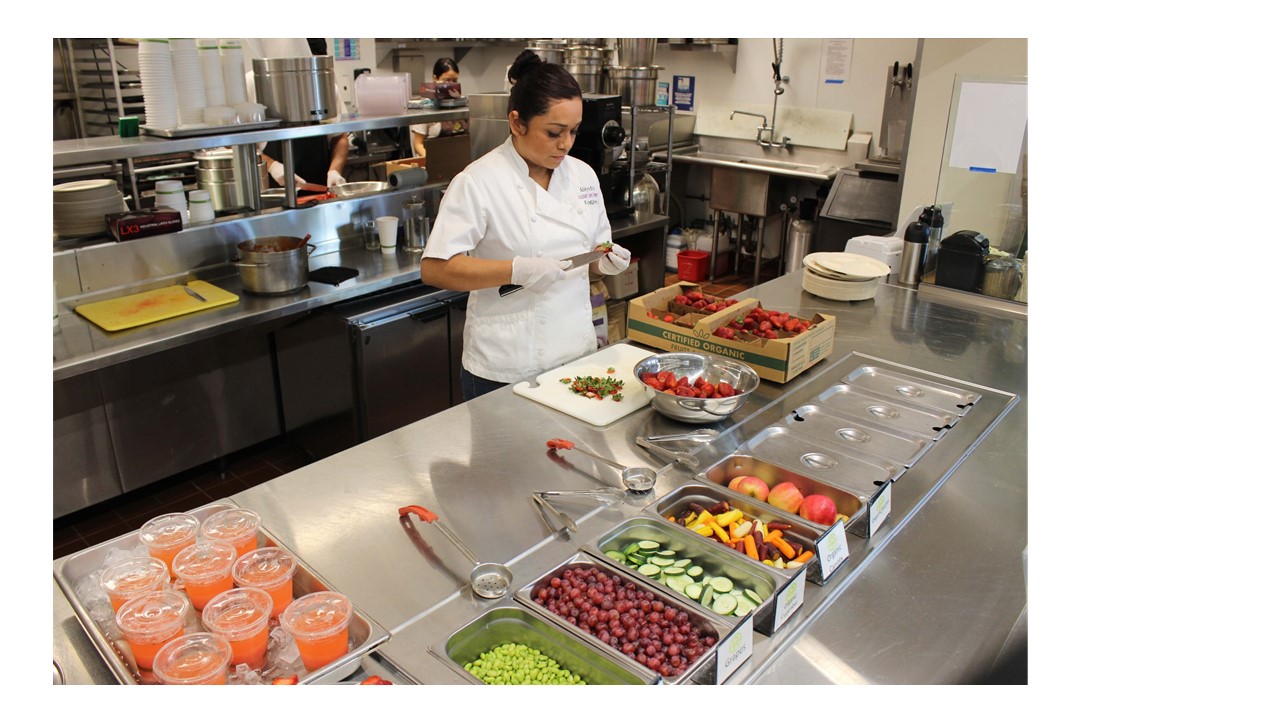
One might think that a new restaurant chain called “Now Hiring” has opened in urban centers across the nation. Especially in the Bay Area, the blessing of “full employment” has become a curse.
I would have liked to start this blog by telling you about the delicious, healthy, affordable—and popular—food at FoodShed, the café at Children’s Discovery Museum of San Jose (CDM). Instead, I will start at what is always the beginning and sometimes, sadly, the end—labor.
Hiring across the museum has become a struggle. It’s very difficult to compete with nearby businesses like Apple and Google, which can offer higher wages and strong benefits. That challenge is magnified in the café. Unlike positions elsewhere at CDM, which enjoy the unique fun and interest of a children’s museum environment, the positions in the café seem just like any food service position in any other on-site café. But Apple, Google, and other tech giants devote significant resources to subsidizing their food service. FoodShed not only doesn’t receive a subsidy but is actually expected to return a significant profit to CDM’s bottom line.
When I first began at FoodShed, labor was the biggest threat to our viability. We had a large staff relative to the size of café and our revenue. While wages were low, we were spending way too much on overtime. Like all true Eureka! moments the solution to this problem was, in hindsight, obvious. The problem was our menu.
FoodShed offered a large menu that included multiple dishes with many ingredients. Food prep relied on experienced cooking staff with advanced skills. But neither the wide selection nor these preparations added to our customers’ pleasure—our simpler items sold equally well if not better than the complicated ones. The labor required to offer this menu was creating an unsustainable financial drain.
The only way to move forward and maintain our commitment to our food quality standards, our customers, and our financial responsibilities involved two key steps:
- We needed to reduce staff—both overall number of employees and the required skill set of those who remained.
- We needed to attract and retain a committed, focused team, reducing inefficiencies that come with turnover and absenteeism.
Creating a smaller menu with simpler recipes enabled us to achieve these goals. Rather than relying on time and technique to turn mediocre ingredients into decent food, we focused our energies on procuring great ingredients that could shine in simple, delicious dishes. This change not only reduced kitchen labor but also increased the speed of service, which is critical when your guests are parents with children in tow.
A smaller staff left us much more vulnerable to absenteeism and sudden resignations, a widespread concern in food service. Our new approach allowed us to cast a wider hiring net and find workers who were willing to accept the wages we could afford, especially when combined with the respectable benefits offered by the museum, (such as health insurance, earned time off, and, the rare cooking job that doesn’t demand night shifts.) Most importantly, we could bring in people inspired by the museum’s culture, where ongoing learning is a core value.
At FoodShed, we make almost everything in-house, from scratch. We make simple sauces, basic soups, and tasty dressings. We preserve, pickle, and cure. We bake cookies, make custards, and make a flourless chocolate cake that won accolades at one of the Bay Area’s best restaurants. Everyone at FoodShed has the chance to learn these techniques and recipes so they can replicate these dishes at their next job or at home for their families on their days off. Just like the museum’s visitors, every day offers our staff the opportunity to learn and grow. Instead of paying $50,000.00 for culinary school and having a debt burden that will haunt them like a bad case of botulism, our staff earns while they learn.
The proof of the pudding is in the eating, and our customers love our puddings. Since we’ve made these changes, sales are up and, for those who count beans rather than cook them, we’ve achieved the following gains:
- Labor expense dropped from 48% to 40% of revenue
- Absenteeism has dropped by more than half
- No cooks have resigned in the last year
- Unscheduled overtime wages have been completely eliminated
Perhaps most valuable of all, Alejandra, who started two years ago as a dishwasher/prep cook, is now the assistant kitchen manager, and I have now have two days off a week so I can cook for my friends, family, and puppy.
Links
https://www.businessinsider.com/san-francisco-expensive-restaurants-cant-afford-workers-2018-6
After many years of owning and managing some of San Francisco’s most respected fine dining establishments, Larry devoted himself to bringing “good” food to families in public venues. He worked with the National Parks and California State Parks systems, the San Francisco Unified School District and created the first hot dog made from grass-fed and humanely raised beef cattle. He is now the Culinary Ambassador at the San Jose Children’s Discovery Museum, and when he is not working in the kitchen at their café –FOODSHED, he collaborates with Kaiser Permanente offering cooking classes for kids and their parents.








